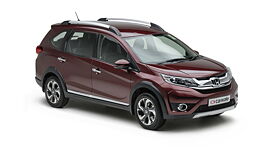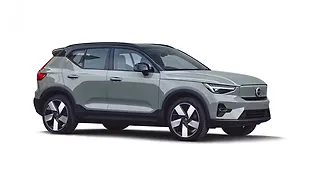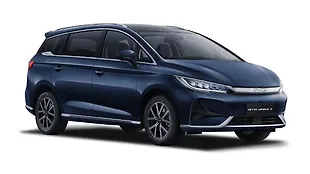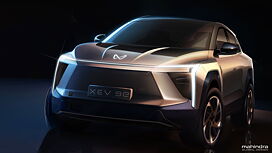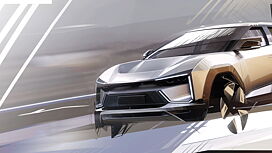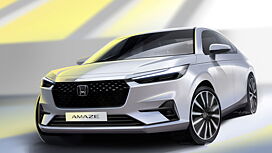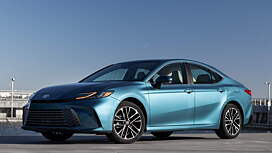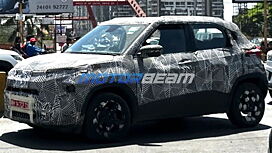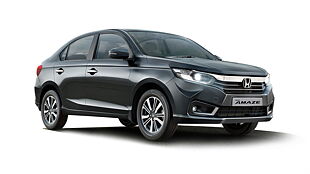Introduction

The 2015 Tokyo Motor Show, apart from being Japanese auto manufacturers’ playground also hosted a number of interesting and futuristic automotive concepts. Some of them may ultimately find their way to actualisation while most of them were purely showcased to highlight the design, engineering, technological genius and mindset of the respective companies. So, here we have a list of seven concept cars that caught our attention. If the future of automotive tech is this, then we’d say bring it on!
1. The Suzuki Air Triser

The mini camper. You certainly can't deny the retro feeling one gets on seeing this concept. Think of the Volkswagen minivan. The Suzuki Air Triser concept is a three-row compact MPV which features a versatile interior layout to give it the feeling of a ‘private lounge.’ How? The concept, when parked, allows the seats to swivel and face each other forming a kind of lounge seating. Smartphone connectivity allows one to project media onto a large digital display inside the car that extends from the B-pillar up to the roofline. Air Triser concept is only 4,200mm long, 1,956 wide and 1,815mm tall (and it’s powered by a 1,372cc inline 4-cylinder, dual-jet engine, aided by a hybrid system and an “Allgrip” five-speed transmission that sends the power to all four wheels.

2. Honda Wander Car

The Honda Wander Car concept allows two adults to ride/stand side-by-side, changing how we usually view driving as a seated activity. Enabled by the Honda Omni Traction Drive System, the Wander Car can move forwards, backwards, laterally and diagonally. It even operates in the automatic mode where the riders can sit back and take in the scenery. It has a length of 2,000mm, width of 1250mm and height of 1850mm. Inside, they seem to be missing the normal steering wheel and will be using a joystick…now that is futuristic. The windshield does more than shield passengers from, well, wind though; it also works as a full-width head-up display (HUD). The car's current purpose is to enable 'freedom of movement' among pedestrians. Now this would be something we would use to navigate our way through Dadar or Kurla railway station. You get the idea don't you?

3. Toyoda Gosei Flesby Airbag Car

This is Toyoda Gosei’s design concept for a small mobile unit envisioned for about 2030. Its safety features include a body that inflates to lessen impact in the event of a collision with a pedestrian and technology to communicate safety information to people nearby using LED light. Flesby is an ultra-small mobility car that attracts a lot of attention. Its size is unfathomably small, making it a super economic option for city traffic and beyond. Secondly, the mini car is padded with external airbags, programmed to deploy in the unfortunate case when an unavoidable collision takes place. Toyoda Gosei is also giving potential clients a feel of how the safety and illumination features work, and even throws in a head-on collision simulator. The company offers the multi-G-forced experience to increase awareness about the perils of hazardous traffic.

4. Toyota Kikai Concept

Combining a medley of touches from an old-school hotrod, dune buggy, and motoring's earliest days, Toyota says that the point is to "appreciate the complex beauty of the mechanical aspects of cars”. The front and rear suspensions are entirely exposed, and even the rear-mounted engine is extremely easy to inspect. In addition to the large side glass for the two passengers in back, the driver also gets to watch the tyres spinning through glass panels mounted near the floor. While most vehicles conceal their inner workings beneath smooth sheet metal, this concept encourages one to get acquainted with the complex mechanical aspects of cars.

5. Toyota FCV Plus

Toyota is one of the few manufacturers who have got the hydrogen fuel cell vehicle thing down pat. Sure, it's a losing battle in some parts of the world, but that does not stop them, does it? The enterprising and innovative house of cars have come with a veritable powerhouse (correction: wi-fi hotspot) in the form of the FCV Plus. Each wheel houses an individual motor, powered electrically by a hydrogen fuel cell stack located between the front two wheels. This set up creates a very spacious interior for the car while keeping compact external dimensions.

6. Subaru VIZIV Future Concept

The automaker describes the latest in its line of VIZIV studies as an “SUV-type concept model embodying the future vision of car development”. VIZIV Future also offers a look at next-generation technologies that will be seen on upcoming models. Among them are the automatic driving technology resulting from the ongoing evolution of EyeSight, and the power unit combining a downsized turbo engine with a hybrid system. The cabin features a beige and black contrast along with the use of orange as a unified accent colour inside and out. A camera for monitoring the driver is located on the instrument panel glare shield. Thanks to an advanced version of Subaru’s EyeSight technology, automatic driving at all speeds on expressways and automatic parking will be possible.

7. Suzuki Might Deck

Suzuki not only scored with the new Ignis and Ignis Trail concept, they also brought along a third entry to their party. A compact pick-up, the Mighty Deck is a purely a showpiece rather one that goes down the production pipeline. The two-seater has more of an urban crossover appearance and reminds one of a small and nifty city car. It is equipped with a pick-up style loading bay and canvas roof while the rear can also be raised or lowered to reveal a hidden storage compartment. We're not sure what these might apart from grocery bags and the odd luggage. With its square dimensions and boxy side panels, it ticks off all the boxes on the Japanese design chart but utility...that's a different story. May be that's why we don't see Suzuki referring to the sales chart for this one.


